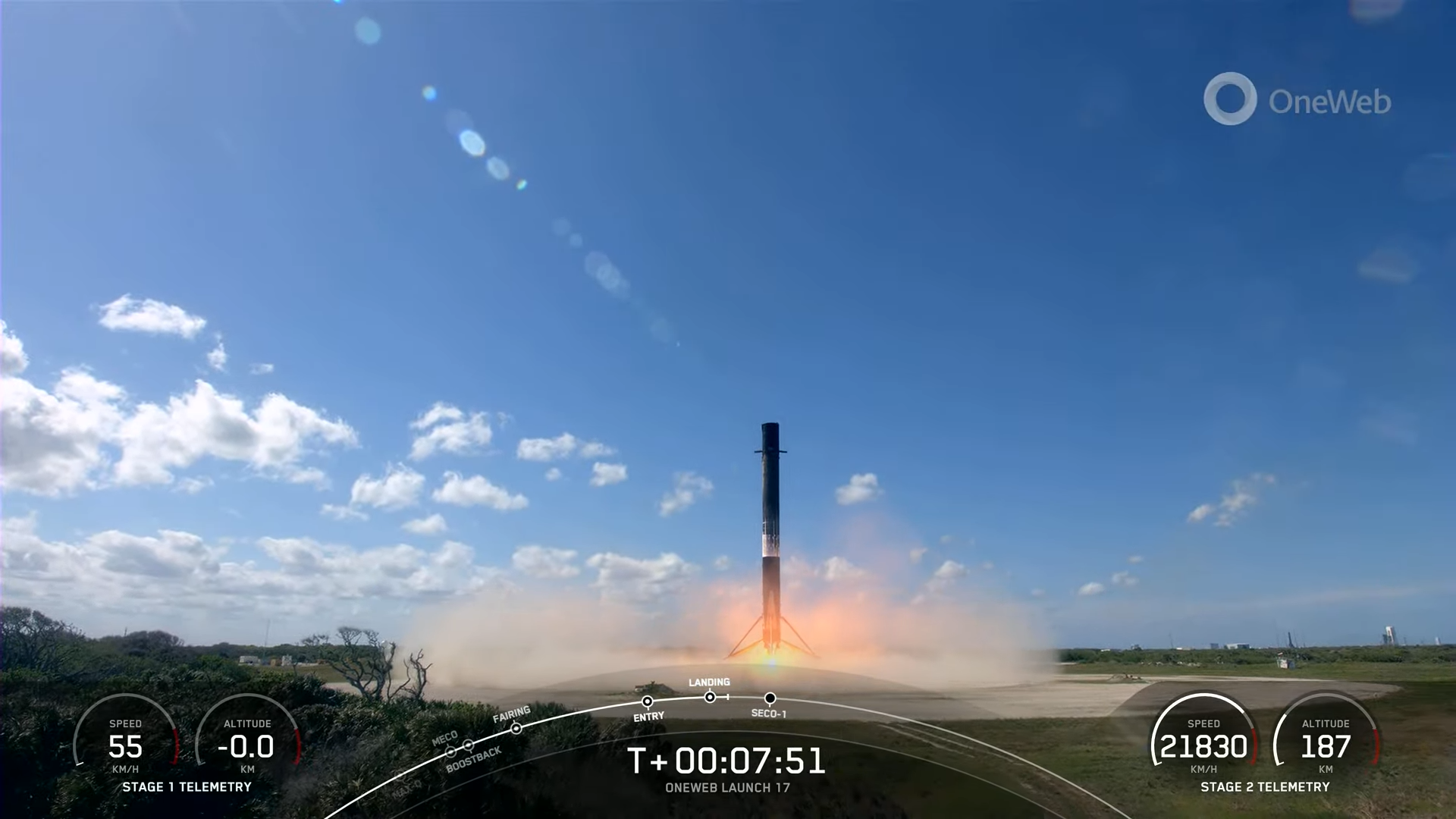
Less than four weeks since her most recent flight—and her 13th outing in total—SpaceX’s veteran B1062 booster speared uphill from storied Space Launch Complex (SLC)-40 at Cape Canaveral Space Force Station, Fla., at 2:13 p.m. EST Thursday, laden with a third and final batch of 40 broadband internet satellites for London, England-based OneWeb. She became the fourth Falcon 9 core in under a year to fly a 13th time, before returning nine minutes later to touch down with pinpoint grace on Landing Zone (LZ)-1 at the Cape.
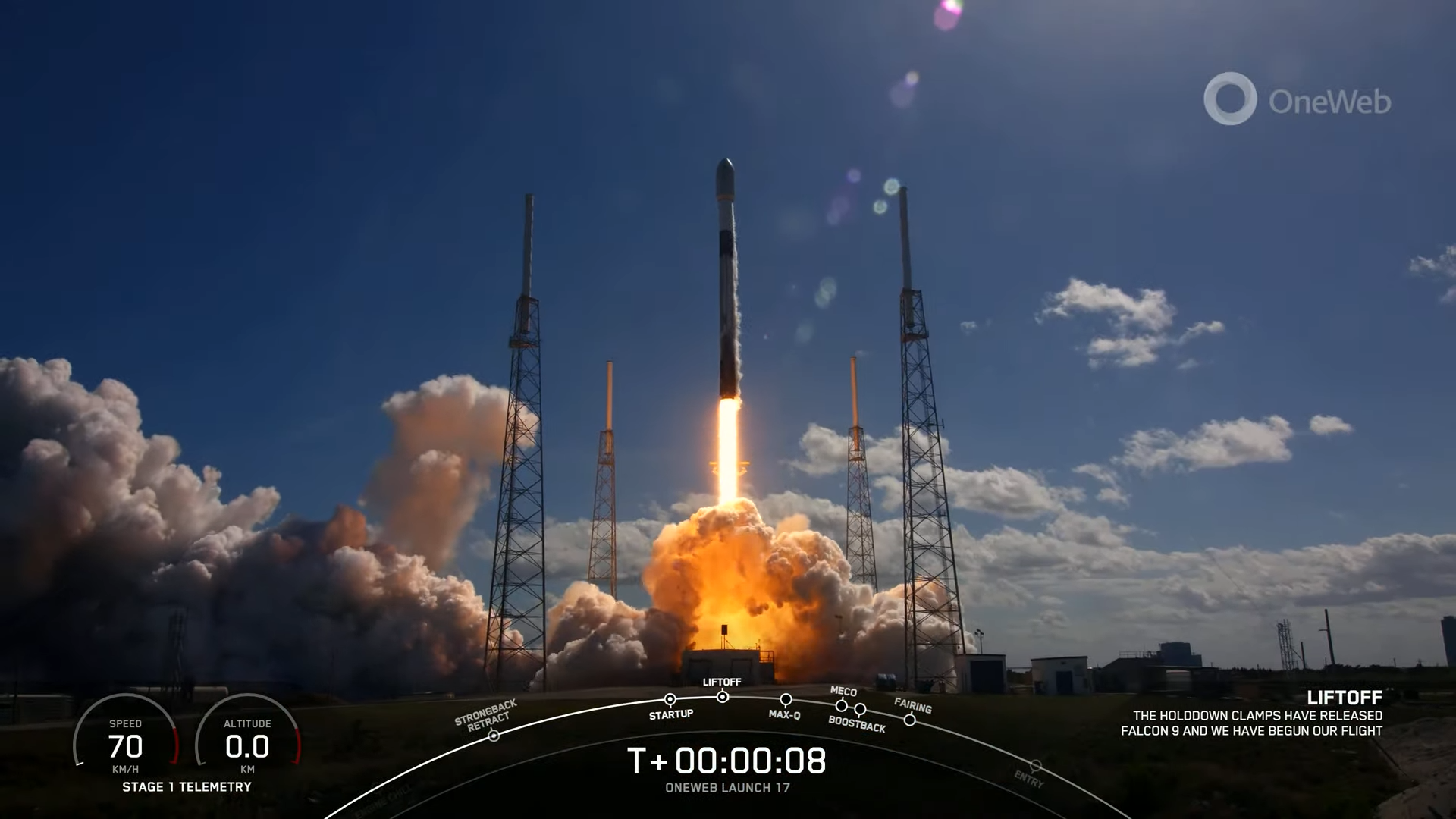
Elsewhere, Relativity Space is aiming for a three-hour “window”, extending from 1 p.m. through 4 p.m. EST Saturday for the second launch attempt of its 3D-printed Terran-1 rocket from neighboring Launch Complex (LC)-16 at the Cape. The vehicle, 85 percent of whose constituent parts by mass are made via additive manufacturing, met with delay on Wednesday, due to a thermal conditioning issue associated with its propellant load of Liquid Natural Gas (LNG) and Liquid Oxygen (LOX).
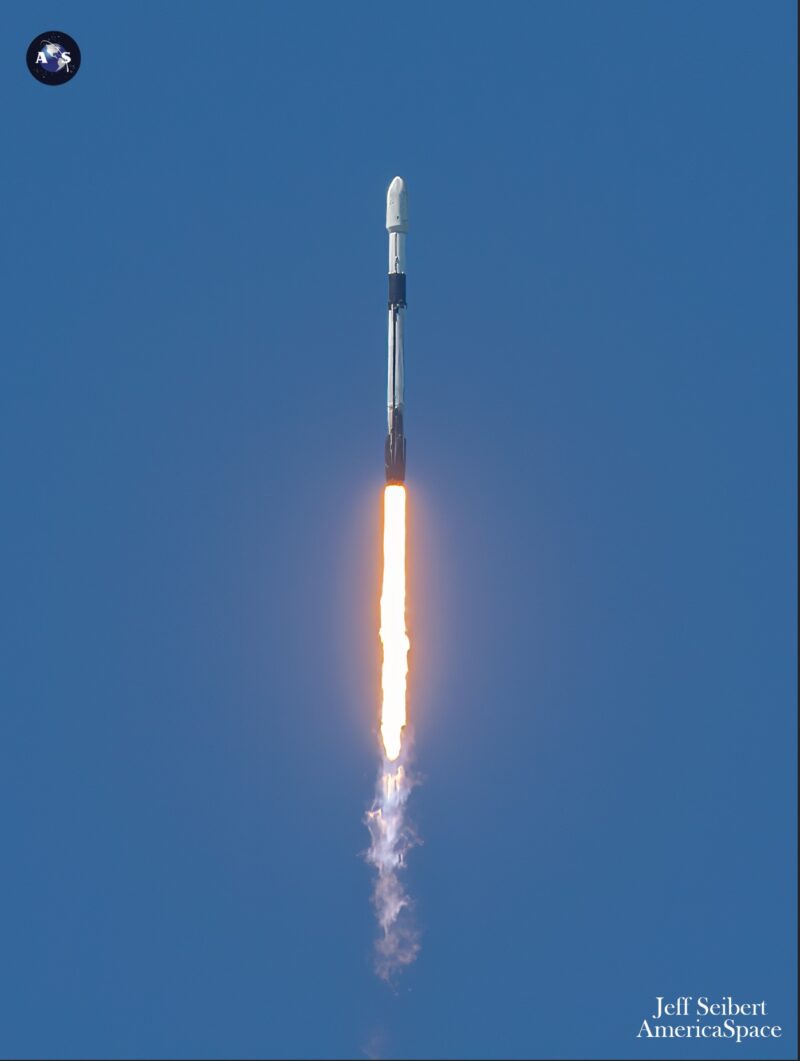
Today’s launch marked the 16th SpaceX mission in 2023’s tenth week, averaging a launch every 4.2 days, a significant uptick on last year’s achievement of one flight every 5.9 days or so. Twelve “single-stick” Falcon 9 boosters have flown 15 times.
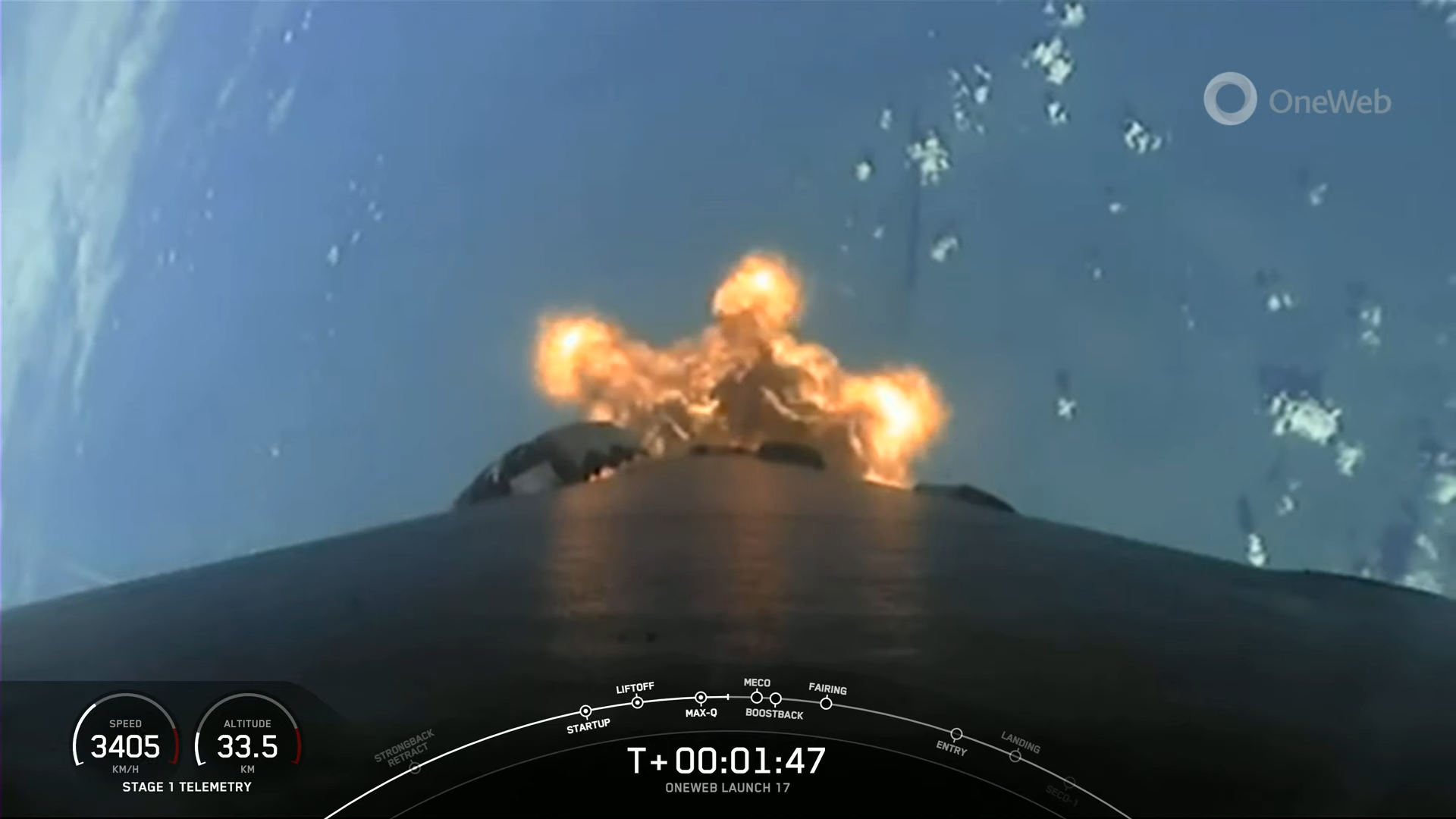
They delivered 388 Starlink low-orbiting internet communications satellites—including the fleet’s 4,000th production-design model—together with the multi-payload Transporter-6 rideshare mission. Other missions lifted the U.S. Space Force’s latest Block III Global Positioning System (GPS) navigation and timing satellite and a pair of geostationary communications satellites for Hispasat and Inmarsat.
Added to that list has been the return of the triple-barreled Falcon Heavy, which lofted the highly classified USSF-67 payload for the Space Force in mid-January. And just last week, Dragon Endeavour was launched with her Crew-6 quartet of NASA astronauts Steve Bowen and Warren “Woody” Hoburg, together with Russian cosmonaut Andrei Fedyayev and Sultan Al-Neyadi of the United Arab Emirates (UAE). They are now entering the second week of their planned six-month stay on the International Space Station (ISS).
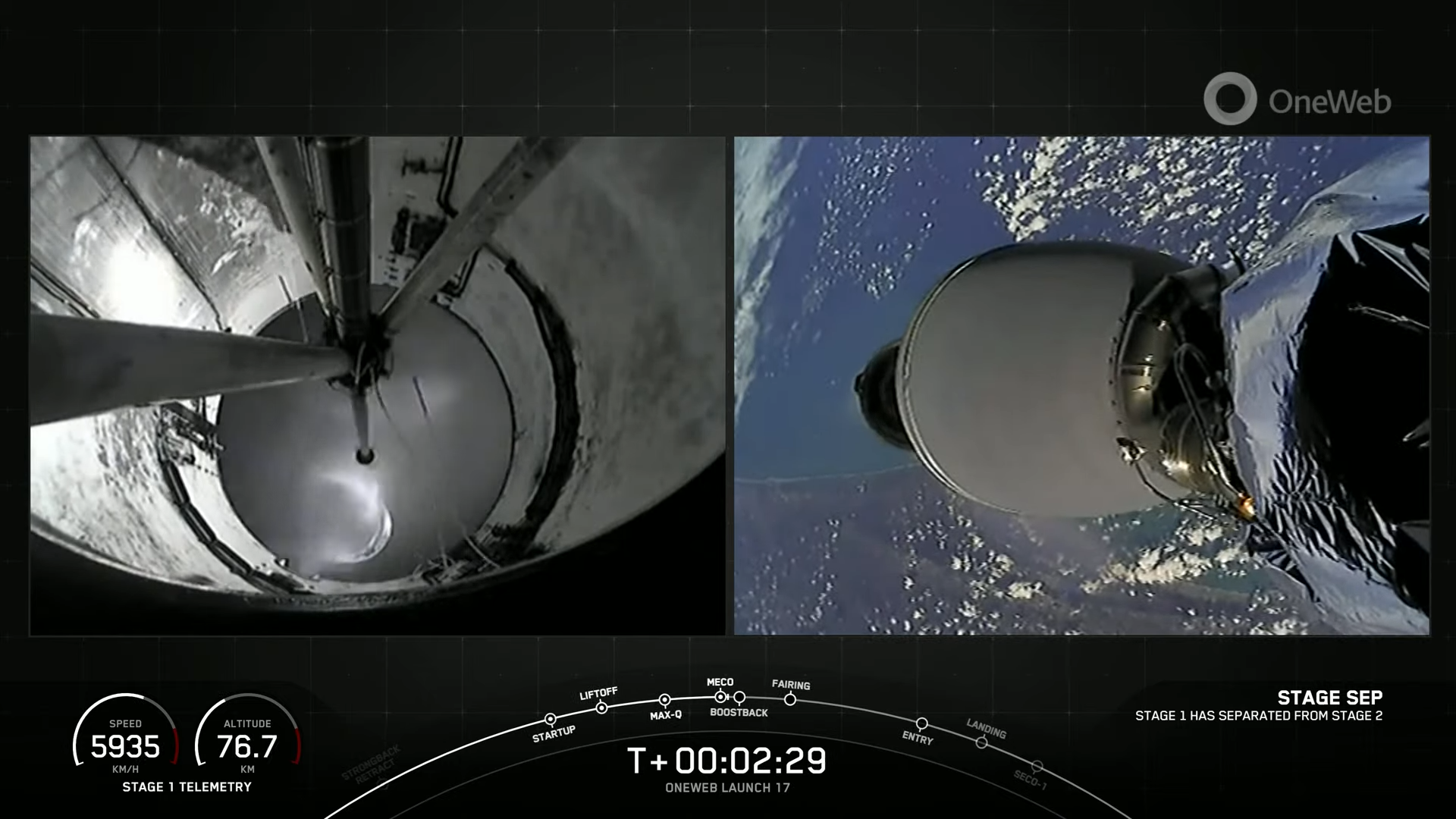
Last week, SpaceX CEO Elon Musk noted that 169 metric tons of payload—equivalent to around 372,500 pounds (169,000 kilograms)—has been inserted into orbit thus far this year. More than two-thirds of that total has been achieved in eight Starlink missions, including one flight in January which tipped the scales at 38,400 pounds (17,400 kilograms), reportedly the heaviest single Falcon 9 payload ever launched to date.
Flying today’s mission was B1062, on her second launch of 2023, having flown only 25 days ago, the third-shortest turnaround time of any Falcon 9 core. She entered service in November 2020, when she lifted the fourth Block III Global Positioning System (GPS III-04) satellite uphill, followed by GPS III-05 the following June.
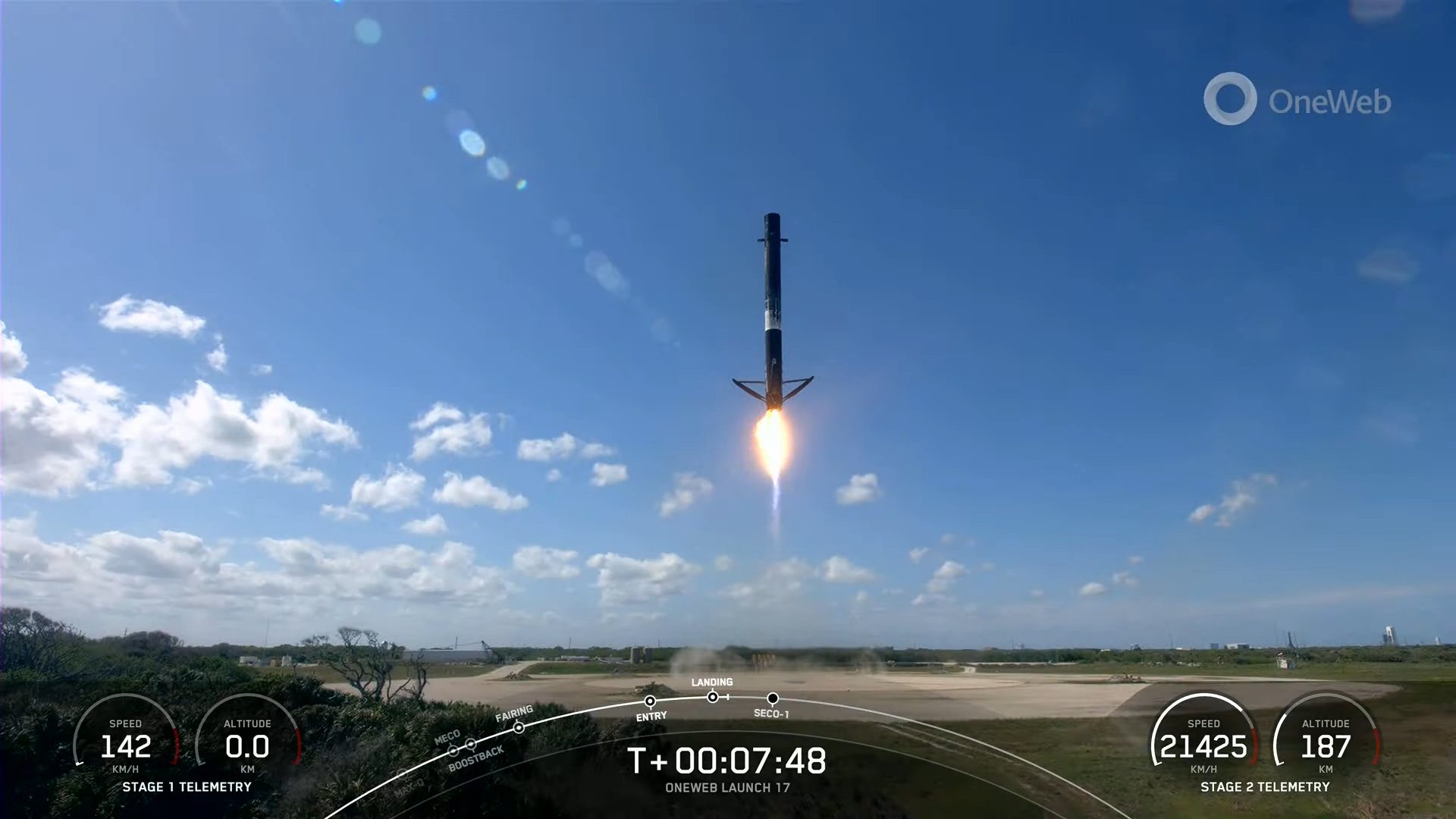
More recently, she flew the historic, all-civilian Inspiration4 crew of Shift4Payments billionaire Jared “Rook” Isaacman and crewmates Sian Proctor, Hayley Arceneaux and Chris Sembroski aboard Dragon Resilience in September 2021 and went on to log eight missions in 2022, the highest number of launches ever attained by a single booster inside a single calendar year. Notably, she flew twice last April, setting a new empirical record of 21 days between launches by the same orbital-class booster.
The first of those launches carried Dragon Endeavour and Ax-1 crewmen Mike Lopez-Alegria, Larry Connor, Mark Pathy and Eytan Stibbe on the first leg of their 17-day mission to the International Space Station (ISS) for Houston, Texas-based AxiomSpace, Inc. Including today’s launch, B1062 has also launched over 370 Starlinks and Egypt’s powerful Nilesat-301 geostationary communications satellite into orbit.
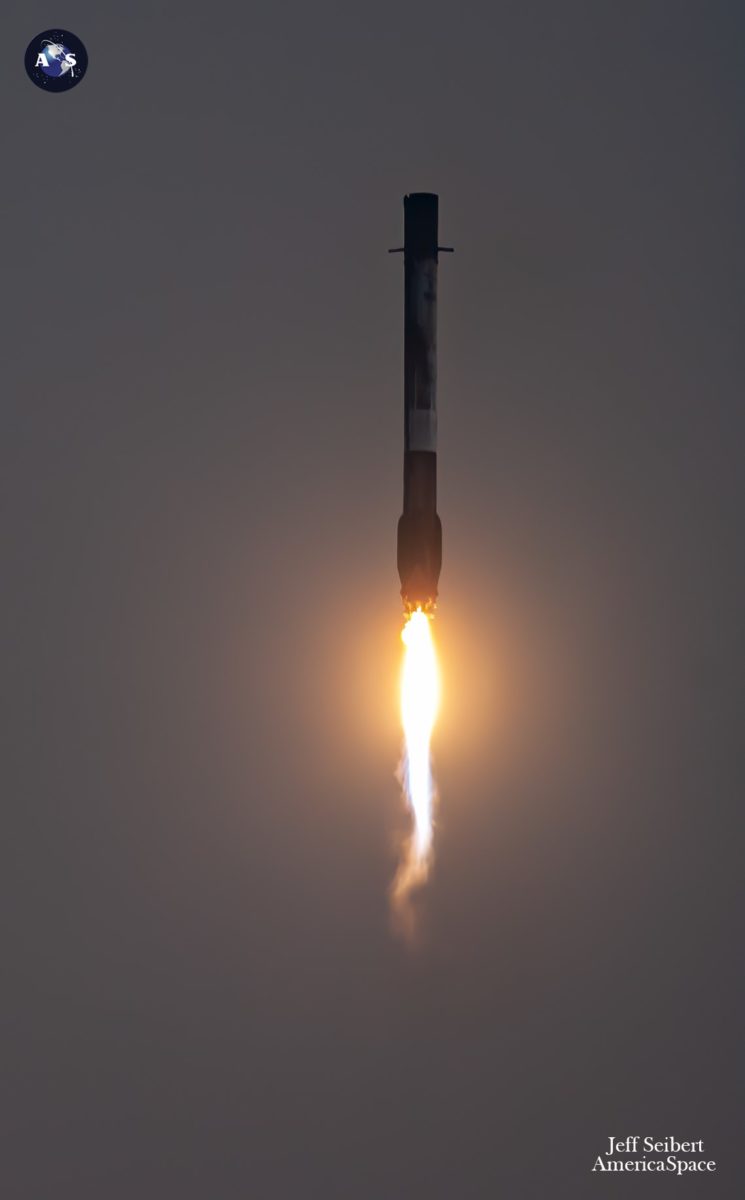
Principal payload for her 13th mission—unlucky for some, perhaps, but on this occasion certainly not for seasoned B1062—was the third and final batch of 40 broadband internet satellites for London, England-headquartered OneWeb. Targeting insertion into a near-polar orbit, inclined 86 degrees to the equator, each satellite reportedly weighs about 275 pounds (125 kilograms) and will occupy an altitude of 750 miles (1,250 kilometers).
It represents the 17th overall batch of OneWebs to have flown since February 2019. Thirteen prior batches, totaling 428 satellites—about 66 percent of OneWeb’s first generation of 648 satellites—were lifted to orbit via Russia’s venerable Soyuz rocket from the Guiana Space Center in Kourou, French Guiana, Kazakhstan’s famed Baikonur Cosmodrome and the Vostochny Cosmodrome in the Russian Far East.
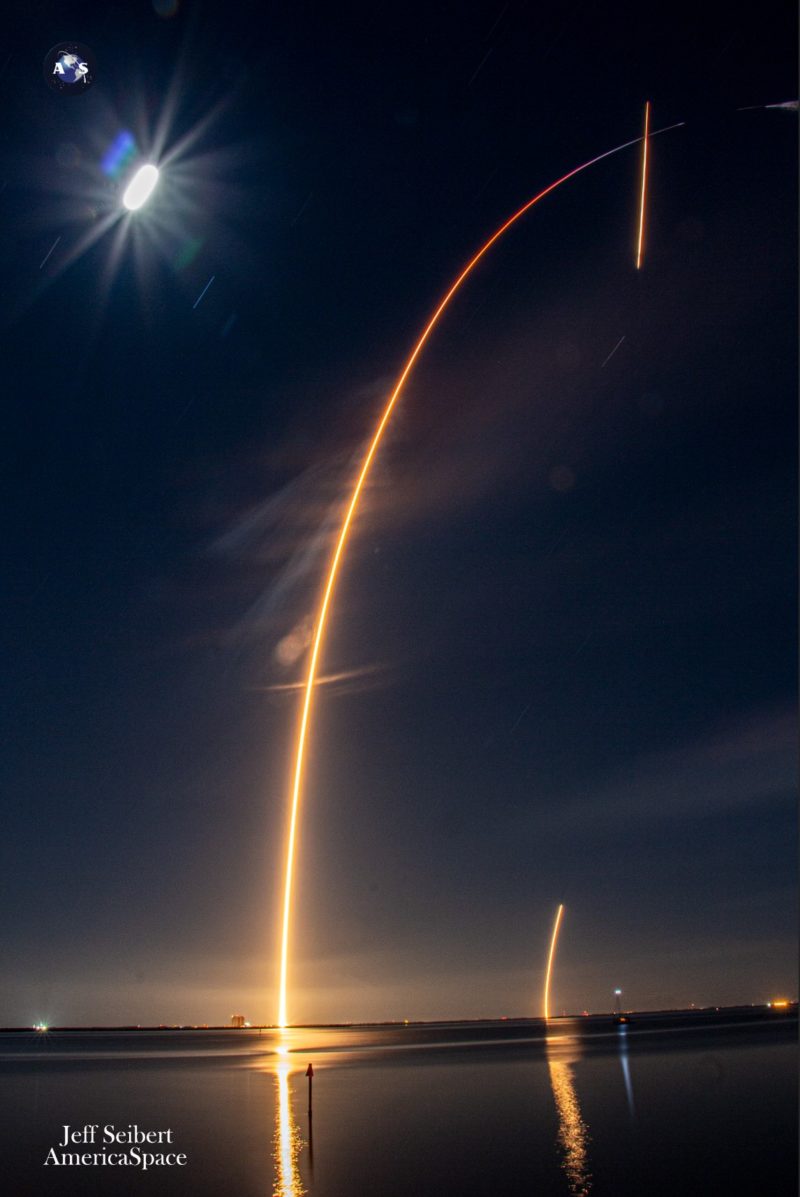
But following President Vladimir Putin’s invasion of Ukraine last spring, and the resultant raft of economic sanctions imposed by Western governments on Russia, OneWeb suspended six further launches out of Baikonur and sourced alternate providers. Last March, it contracted with SpaceX, then added New Space India Ltd.—commercial arm of the Indian Space Research Organisation (ISRO)—to an expanding launcher portfolio in April.
Thirty-six OneWebs rode the first of two planned Indian Geosynchronous Satellite Launch Vehicle (GSLV) III boosters from the Satish Dhawan Space Centre in Sriharikota, Andhra Pradesh, last October, raising the total number of satellites placed into orbit to 462. And in December and January, a pair of Falcon 9s lifted a total of 80 OneWebs in the first and second of three planned SpaceX launches.
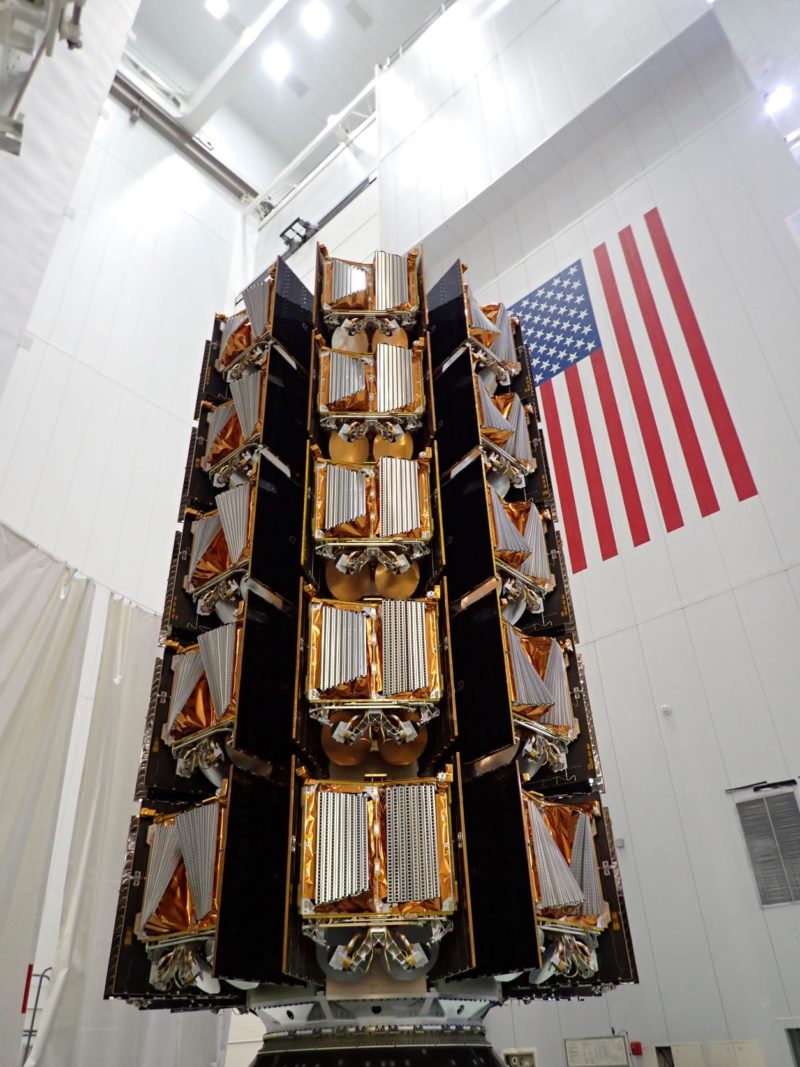
With today’s third launch of a further 40 birds, OneWeb now boasts 582 satellites, bringing the constellation to almost 90-percent completion. Following a smooth liftoff, B1062 powered uphill for the opening 2.5 minutes of flight, then separated from the Falcon 9 to return to LZ-1 at the Cape, SpaceX’s fifth “land” landing of the year.
The single Merlin 1D+ Vacuum engine of the rocket’s second stage then performed a customary six-minute “burn” to continue the push uphill. Deployment of the 40 OneWeb satellites was then scheduled to occur over a period of 37 minutes or so, concluding a little more than 1.5 hours into the mission.
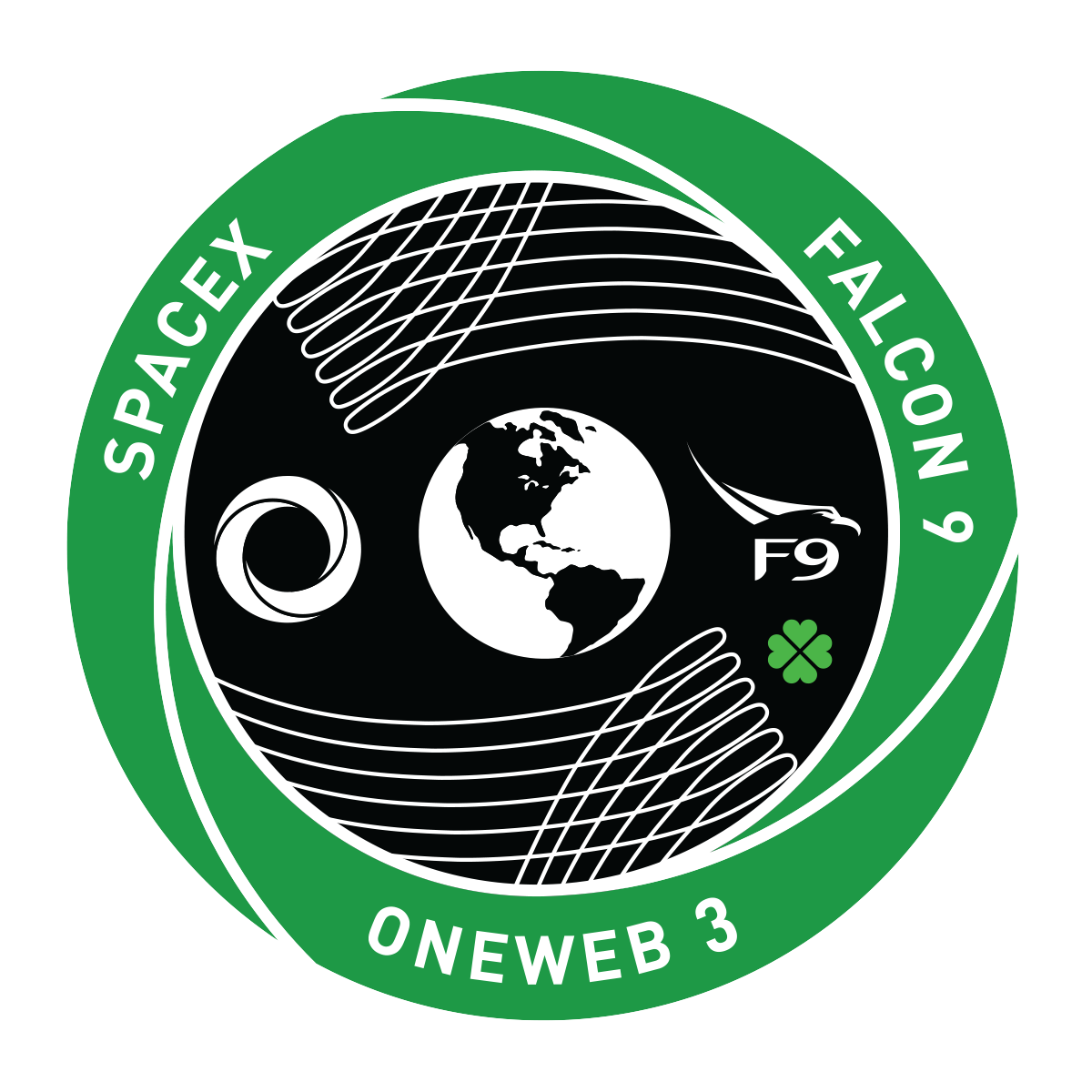
With its third launch of March thus complete, SpaceX’s attention now moves to historic Pad 39A at the Kennedy Space Center (KSC), where the CRS-27 Cargo Dragon resupply mission to the space station awaits liftoff at 8:30 p.m. EDT on Tuesday 14th. Heading deeper into the month, another Falcon 9 is slated to lift the SES-18 and SES-19 dual-stacked geostationary communications satellites, both built by Northrop Grumman Corp., each equipped with ten C-band transponders.
These two satellites form part of a group of four SES birds—of which the first pair, SES-20 and SES-21, rode a United Launch Alliance (ULA) Atlas V to orbit early last fall—to spearhead an ongoing campaign to accelerate SES’ C-band clearing plan and meet a Federal Communications Commission (FCC) objective to free up spectrum for 5G terrestrial wireless services. In June 2020, SpaceX was selected as the launch provider for SES-18 and SES-19, with an expectation that these new satellites will help to facilitate the broadcast delivery of digital television to nearly 120 million homes.
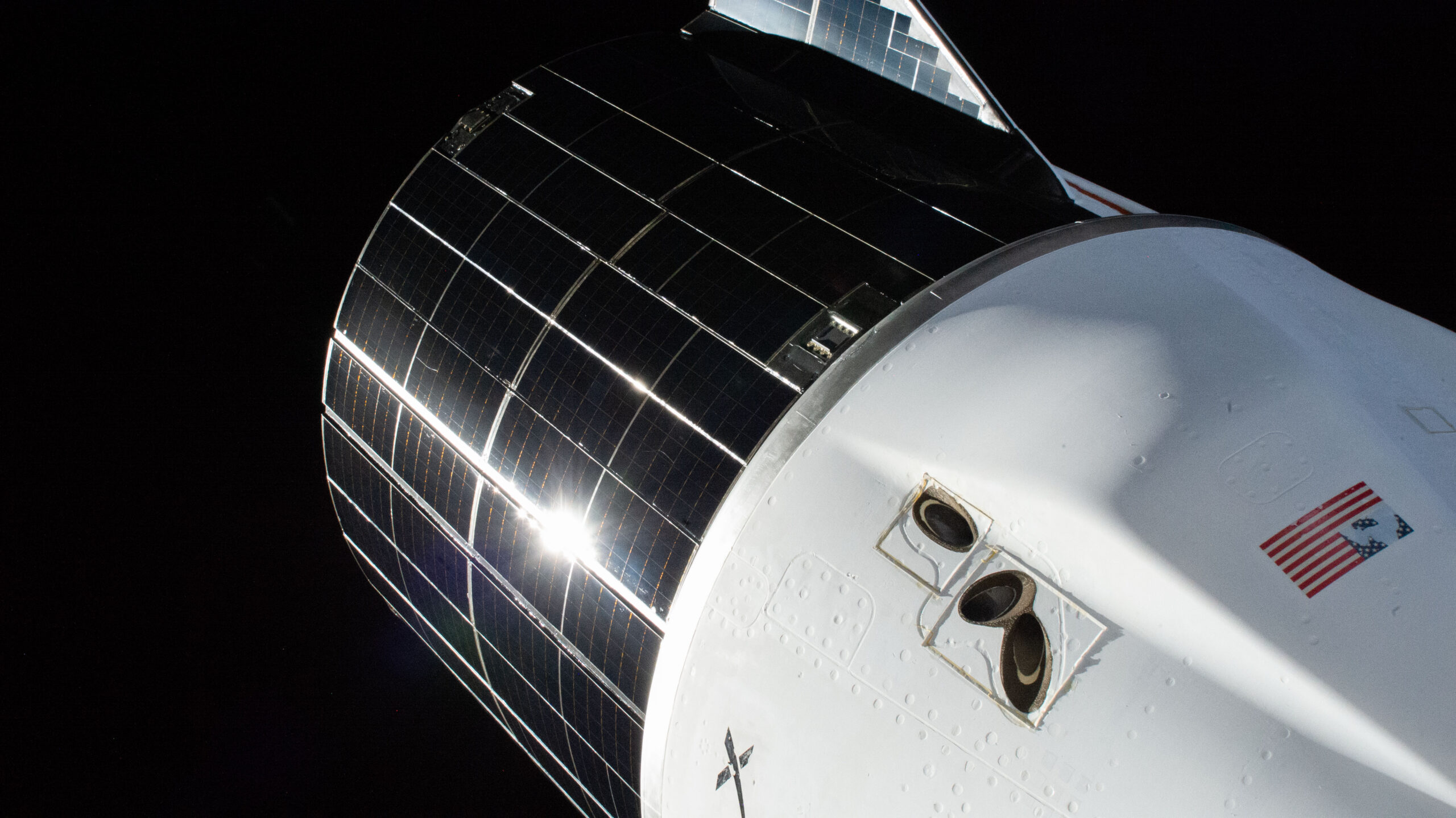
And on the West Coast, at Vandenberg Space Force Base, Calif., SpaceX expects to see the first launch of “Tranche 0” of the Transport and Tracking Layer before the end of March. This fleet of low-latency, high-capacity connectivity satellites are flying on behalf of the Space Development Agency (SDA).
Tranche 0 will form the basis of an eventual “constellation” of 300-500 low-orbiting experimental satellites to furnish ground-based warfighters with “assured, resilient, low-latency military data and connectivity worldwide”, together with Wide Field of View (WFOV) infrared sensors for infrared missile tracking. Contracts for Tranche 0 were signed with SpaceX in January 2021 for an estimated total value of $150.45 million.
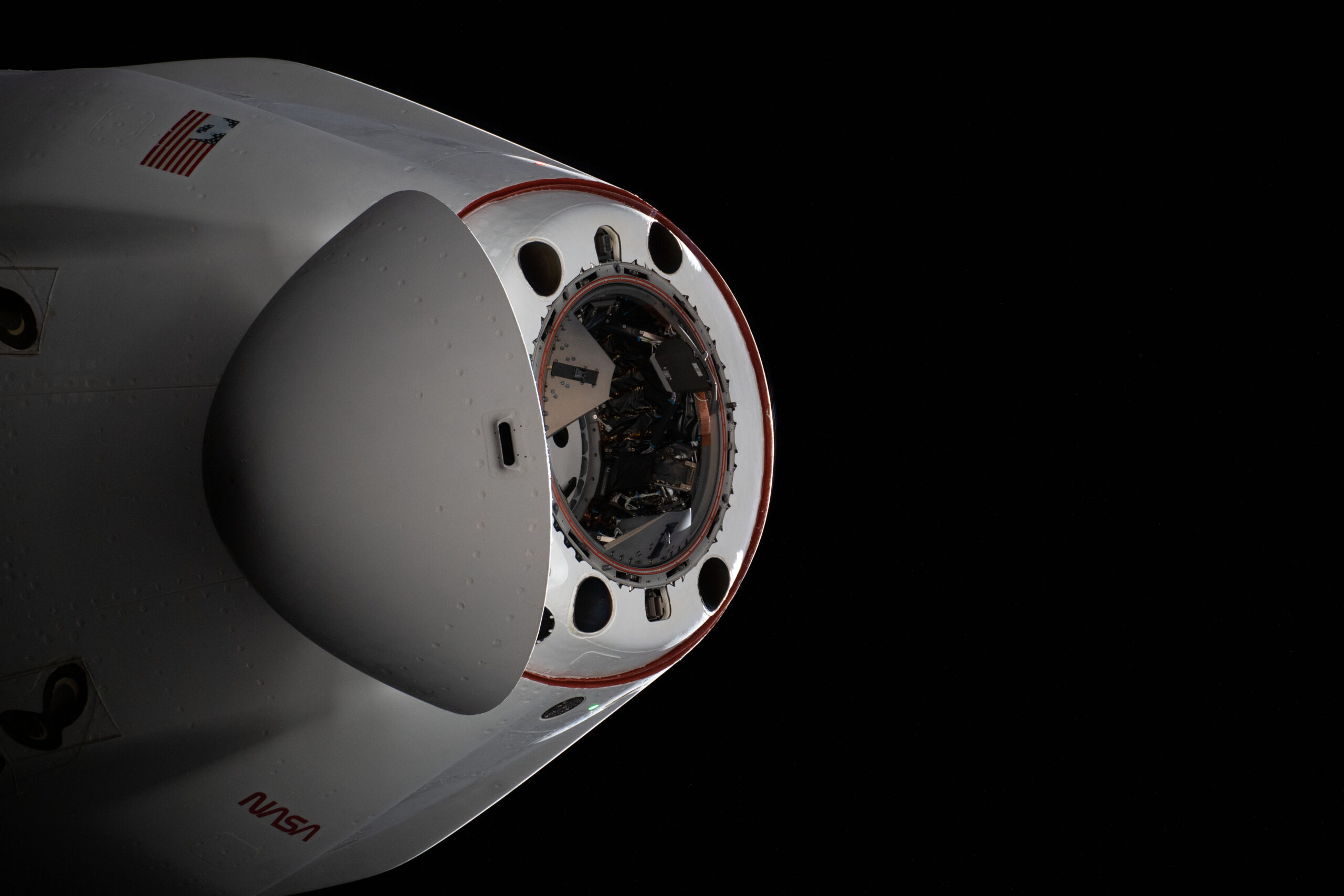
Thursday’s successful launch for OneWeb came only hours after Wednesday afternoon’s disappointing scrub of Relativity Space’s first 3D-printed Terran-1 booster from Launch Complex (LC)-16 at the Cape. That mission was scheduled to fly during a three-hour “window” yesterday, but countdown operations were repeatedly stalled—and ultimately the attempt was scrubbed—in response to an issue pertaining to thermal conditioning of its propellant load of Liquid Natural Gas (LNG) and Liquid Oxygen (LOX).
“Thanks for playing,” came the disappointing call from Launch Director Clay Walker after yesterday’s scrub. According to Relativity, the attempt was called off “due to exceeding Launch Commit Criteria (LCC) limits for propellant thermal conditions on Stage 2”, with an addendum that another try would be made “in the coming days”.
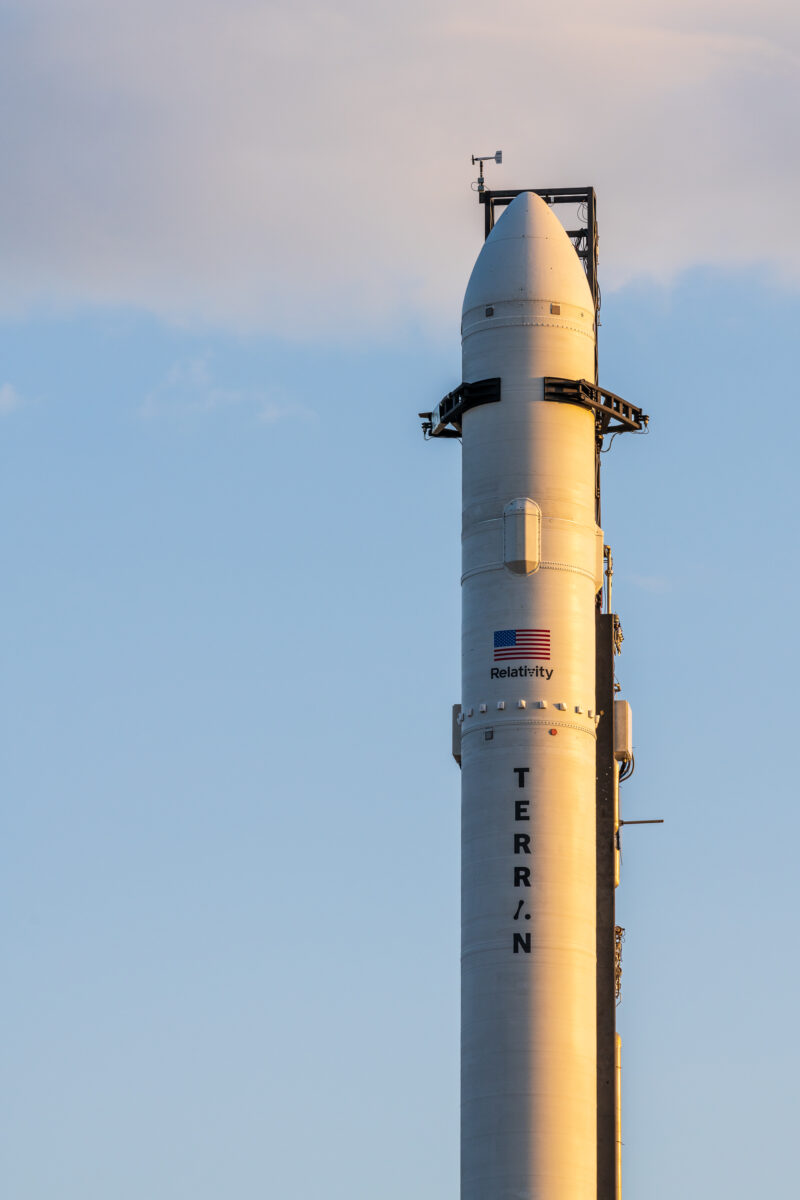
Relativity’s next effort to get its 110-foot-tall (33.5-meter), two-stage booster off the ground is now reportedly targeted for a three-hour “window”, extending from 1 p.m. through 4 p.m. EST Saturday, 11 March. Weather conditions along the Space Coast are predicted to be around 90-percent-favorable, per the 45th Weather Squadron at Patrick Space Force Base in a Wednesday afternoon update, improving to 95 percent should the mission slip again to an Eastern Range-approved backup opportunity on Sunday.
“A strong cold front is forecast to move across the Florida Peninsula Friday night into early Saturday morning,” noted the 45th. “Moisture ahead of the front will remain rather limited, so we are not expected to see widespread precipitation, although scattered showers and isolated thunderstorms are possible.
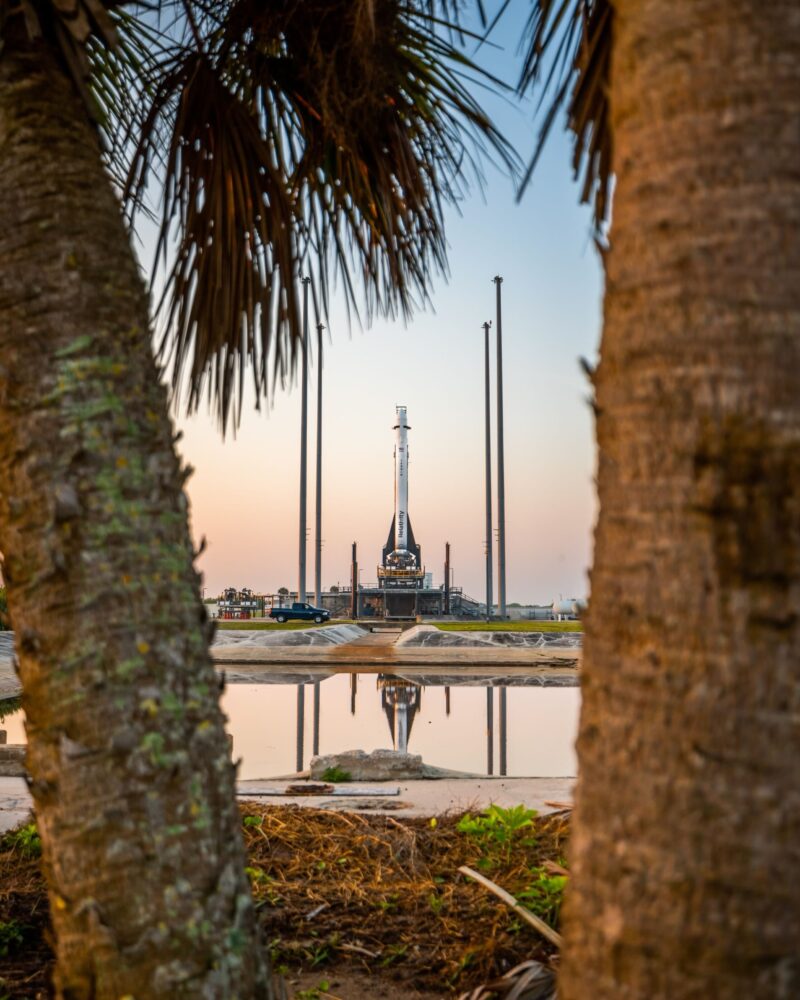
“After frontal passage, expect brisk north winds with sustained values of 10-15 mph (16-24 km/h) with gusts to around 20 mph (32 km/h),” it added. “There could be a few lingering clouds around early in the day, but will yield to clear skies through the count.”
All told, this should yield a slight chance on both Saturday and Sunday of a violation of the Cumulus Cloud Rule. However, although it explained that a few such clouds might “linger around”, the 45th stressed that weekend weather conditions overall are predicted to be “excellent” with a slight drop in gusts during Saturday’s countdown.






What a beautiful launch and successful orbit and booster return. The photos are spectacular and never gets boring.